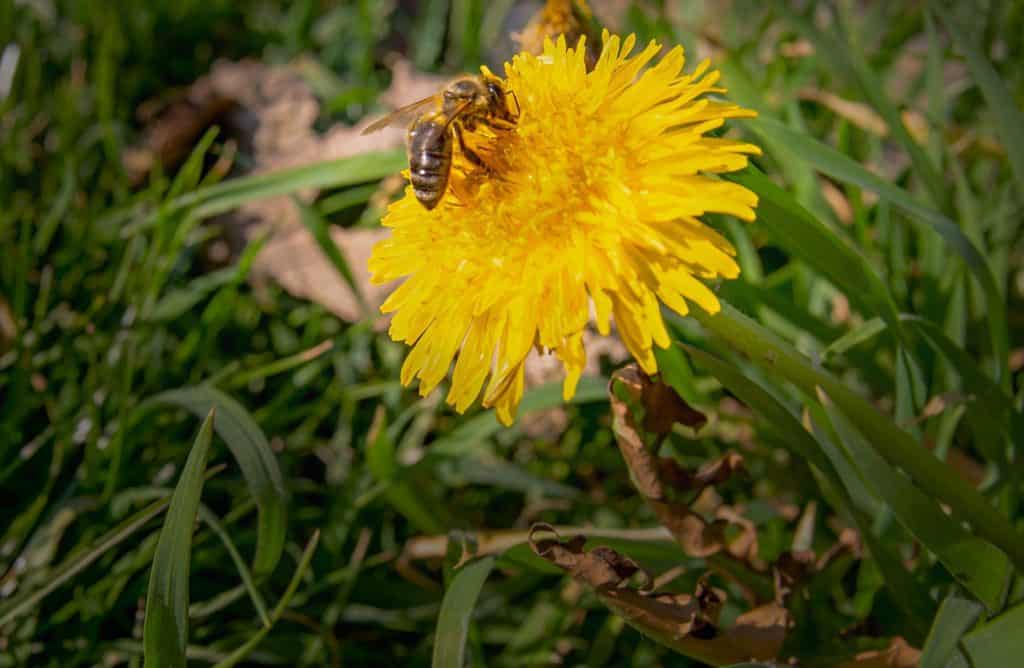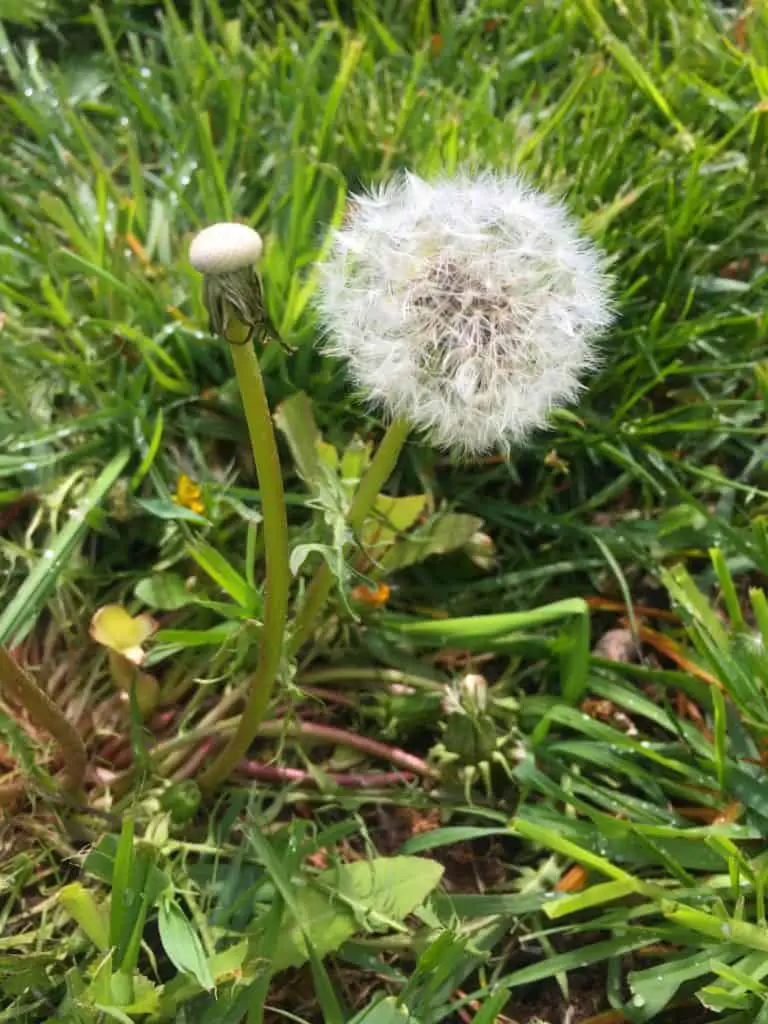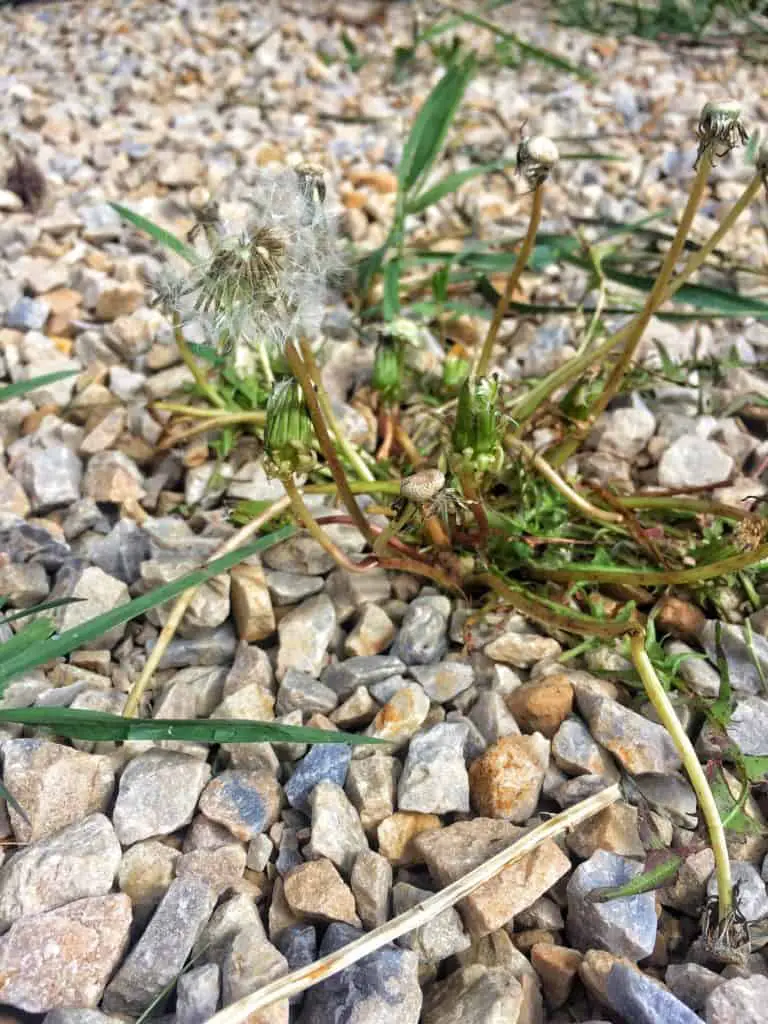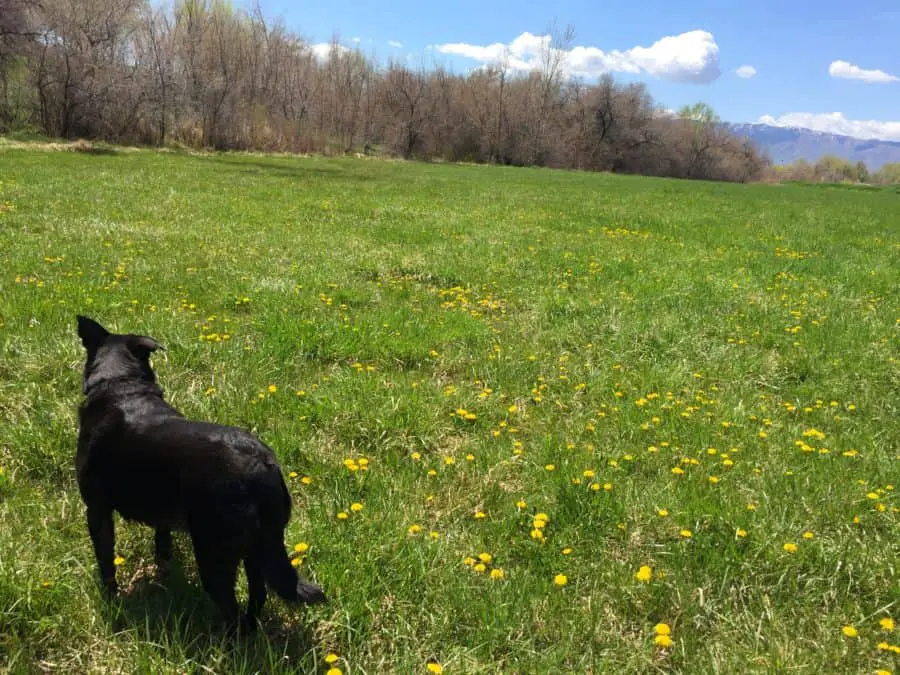Are dandelions really all that bad? No. They’re incredible, edible, and nutritious too!
Did you know that dandelions are actually good for your lawn and garden, and especially for you? In fact, the dandelion is most likely healthier for you than any vegetable growing in your garden!
It is also an important source of food for bees and other pollinators, and contains many healing properties known to fight toxins and ailments of the human body. The dandelion is also extremely beneficial for your lawn, providing natural fertilizing agents and aeration.

The dandelion is also known as the “puffball”, “lion’s head” and “monk’s head” and is commonly found growing in areas with good drainage and direct sunlight.
So quit cringing when you see these yellow flowers growing in your yard. Though considered a weed by most homeowners and landscape gardeners, the dandelion was once known as a boon to one’s garden. As a matter of fact, gardeners in Europe used to weed out the grass to allow dandelions more room to grow.
It is also an extremely prolific and eminent plant, known to have been cultivated in ancient Egypt, Greece, Rome, and Japan, the dandelion has been used for millennia in tonics and medicines. Not until the 20th century (with the rise in popularity of lawns) was the dandelion viewed as a weed.
Its scientific name (Taraxascum officinale) is an English corruption of “dent de lion” meaning “lion’s tooth” in reference to the tooth-like serrations on the plant’s leaves. The genus name “Taraxacum” is thought to be derived from Persian “tarashaquq” (the word for plant), and the species name “officinale” is derived from Latin “officina” (the word for office or pharmacy).
The dandelion, is not a native plant to North America, but is originally from Europe. Many historians aver that the first dandelions were brought to North America by the puritan pilgrims, who planted them in their “new world” purposefully as an herb or medicinal crop. Since, the dandelion has become naturalized in all 50 states as well as Canada and Mexico, though it is not considered an invasive species.

The dandelion is one of the first plants to sprout and bloom in the spring. So, when new butterflies or other pollinators (including bees) emerge from their winter slumber in the early spring the dandelion flower becomes an important food source, providing essential pollen and nectar.
Actually, dandelions provide nectar for more than 100 different insect species, while its seeds and leaves provide food for more than 30 species of birds, chipmunks, squirrels, and other small critters. Though dandelions do not produce the amino acids (arginine, isoleucine, leucine and valine) that bees need to produce offspring or raise a brood, they do provide what is essentially a “snack food” for the bees to live on until other pollen and nectar sources bloom.
Dandelions are not just good for insects and critters, they’re exceptionally healthy for humans too! This miraculous plant is edible from root to flower, and is actually a perennial herb. Young dandelion leaves are loaded with vitamins, minerals, and fiber. The leaves can be eaten raw or cooked, and are packed with vitamins A, C, K, and E, as well as folates and minerals including iron, calcium, magnesium and potassium.

The dandelion also contains numerous beneficial antioxidants, such as beta-carotene and polyphenols which inhibit oxidation, help neutralize the negative effects of free radicals in the human body (believed to be the culprits of diseases such as cancer, diabetes and heart disease), and aid in minimizing aging and cellular damage. From numerous studies conducted on animals, it is also believed that dandelions can aid in reducing blood sugar levels and improve insulin sensitivity due to the presence of bioactive compounds chicoric and chlorogeic acid. Similarly, dandelions have been found to reduce blood pressure and act as an effective diuretic. Additionally, dandelions are high in the carotenoid Lutein (known as “the eye vitamin”) which is used to prevent eye diseases including macular degeneration, cataracts, and retinitis pigmentosa. In fact, dandelions have seven times as many Luteins as carrots! (and you thought carrots were the best veggie for your eyes).
The root of the dandelion is high in fiber and can be eaten dried or raw, but is most commonly used to make tea or other drinks. Ever heard of dandelion wine? The roots can also be dried or baked and ground to make a coffee substitute.

Not convinced yet that the dandelion is worth keeping around? It may not matter, as they are near impossible to eradicate, and are masters of survival. Dandelions are known to take root in extremely arid and harsh environments, and can push their way through gravel, sandstone, and even cement. While doing this, they create channels for air and water to penetrate, and loosen the soil structure. The tap root of the dandelion can sink as deep as 15 feet, and unless pulled up root and all, can sprout a new flowering plant from just one inch of remaining root.
Though you may feel chagrin to see new dandelions appear in your nice green lawn each spring, take heart, because the dandelion is actually making your lawn stronger. The sprawling roots of that yellow “weed” are working hard to loosen hard-packed soil, aerate the ground, reduce erosion, and pull up nutrients found deeper in the earth than your Kentucky blue grass can reach. The deep taproot of a dandelion mines for calcium, iron, and potassium which is disseminated to the leaves. When the leaves of the dandelion die, they decompose and spread mineral-rich organic matter to the surrounding soil.

An individual dandelion plant can grow for 5-10 years and reach considerable size (up to 50 centimeters across). Dandelions grow from seeds, and are capable of reproducing without a need for cross-fertilization. We are all familiar with the flowering seeds of the dandelion (technically called cypselae) which are produced on each flower stock, and contain a set of feather bristles (pappus) that act as a sail or parachute to assist in the seed’s distribution to a new location when caught by the wind. (or the excited breath of a small child). When the seed germinates in new soil, it produces a rosette of small basal leaves on the ground’s surface and concentrates on growing its strong tap root.

By the time you see a dandelion growing in your yard, the plant itself is already well established, which is why it may seem you can never be rid of them in your lawn and garden. There is always a new generation of dandelions already in the soil waiting to grow.
Want to try adding some dandelions to your diet but aren’t certain how? Here are a few tips. First and foremost, do not just pick any roadside or yard dandelion for consumption unless you are certain that the plant has not been contaminated by environmental chemicals. Make sure that the dandelions you choose to consume are pesticide and herbicide free. You will also want to make sure that the dandelions you pick are not in an area that is used by pets for their “bathroom”.
For anyone just starting to eat dandelions, know that they are quite strong, and bitter tasting when eaten raw. They can also have somewhat of a peppery undertone. Therefore, as with chicory, artichoke, chamomile, cinnamon, or mugwart, it is recommended that you mix the leaves with other greens, and balance the taste with sweet flavors. For example, if eating dandelion greens in a salad, try using a sweet vinaigrette dressing or adding some toasted mustard seed to round out the flavor. Another trick to dismantle bitterness is to add an acidic element such as lemon juice. The natural bitterness of dandelion greens can also be muted by coarse fats, such as bacon fat, unrefined olive oil, or butter.

As mentioned above, some folks use the yellow petals of the dandelion flower (not the green base) to make a dandelion wine, and others use the petals to make a syrup for pancakes and waffles. The syrup recipe can be found here. Some folks even use dandelion petals to make cookies.
What if I still don’t like dandelions? If you still don’t want to see those little yellow flowers in your lawn, but also don’t want to use a pesticide, you’re in luck. One healthy method of controlling dandelion growth is simply to let your lawn grow a bit longer. The next time you mow your grass, only take off the top 1/3 of the grass blades. Grass cut too short allows weed seeds to make their way to the soil more quickly and provides them with sunlight. Leaving longer grass will help the lawn to thicken, keep new seeds from getting needed sunlight, and choke out potential weeds. Do this before the dandelions go to seed, and you will prevent the problem from growing. This method will not eradicate the problem, but will certainly help.
Overall, the dandelion is quite a punch packing little plant, so before you throw your hands up in frustration, or go out and broadcast a potentially toxic weedkiller to your lawn, consider enjoying them instead.


5